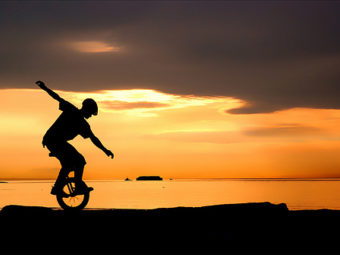Trying to achieve the midfoot landing sometimes gives people a little run for their money. Trying to figure out where their feet are hitting is for some, a mystery. Most runners have never given any thought about how their stride looks or how they land. The first time someone might decide to give it some thought could be when they start developing pain or decide they want to improve their efficiency. Research has shown over the years the closer a runner’s foot lands near their center of mass the less likely an injury will develop.
Learning to keep a short stride is a mindful practice but it can be obtained. You just have to be consistent in your efforts and it will become a habit.
When you’re out on your next run, look down and see if you can see your shin when your foot is landing. If you can see it you are over striding and most likely landing with a heel strike. Try bending your knees more so that they face the ground more and you are not locking you knees when you land.
Learning to increase your cadence will help you keep a short stride. An optimal running cadence is between 170 and 180 strides per minute (spm). To figure out what your cadence is, count one leg stride for a minute and multiple by 2 and that will be your current strides per minute. If you are not near 170 use a metronome to gradually increase the beat per minute over several weeks until you are able to run between 170 and 180 spm. An example would be increase by one beat a week until you arrive at your optimal stride. The shorter you are the higher your cadence will need to be. If you can keep your cadence in slower speeds you will have less impact and time spent on the ground.
Lifting up from the crown of your head and just relaxing your legs from the knees down sometimes will help keep you from over striding. Remember that your body is learning new movement so speed is not a factor until you develop muscle memory and can run relaxed at faster speeds while landing with a midfoot landing.
Gradually changing your shoe to a lighter shoe with a lesser heel-toe ramp while practicing a shorter stride will help you develop new mechanics. By adjusting your stride, you will eventually be able to develop a midfoot landing.
Learning to keep the shorter stride will benefit you from working harder with your legs and allowing your ankles to relax so that your lean moves you and not your feet, and thus providing for more energy conservation. Many runners who used to have knee issues have found their knee issues go away once they learned to keep their stride shorter. So you might find it worth giving the shorter stride a try.




